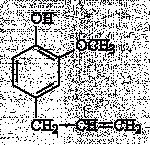Feeding cacti with:
folloving displayed molecyles
ESTRAGOLE:

Myristicin

And get a psychedelic!
Would this work?
With shrooms tryptamine analogs have been made by 4-hydroxy enzyme i think
Ill find link if you want me to
More:
https://www.synthetikal.com/psycoforum/viewtopic.php?t=45
folloving displayed molecyles
ESTRAGOLE:

Myristicin

And get a psychedelic!
Would this work?
With shrooms tryptamine analogs have been made by 4-hydroxy enzyme i think
Ill find link if you want me to
More:
https://www.synthetikal.com/psycoforum/viewtopic.php?t=45





